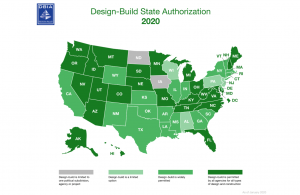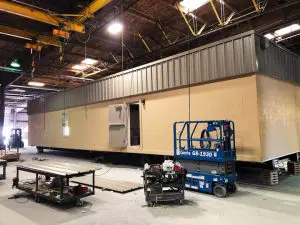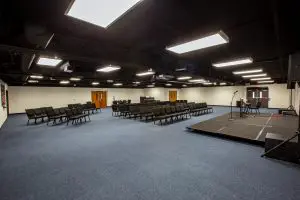
The Design-Build project delivery method is now accepted in all but two U.S. States
Nationally, over the last three decades design-build has been adopted by states all around the country. All but two states, Iowa and North Dakota, now permit its use. Ramtech has been at the forefront of using the design-build project delivery method since it was first authorized for public projects by the Texas Legislature in 1995. Design-build has played an integral part in our growth, by allowing us to be a single-source solution in designing and constructing permanent modular construction projects for educational institutions and government agencies across the state. (more…)

Ramtech has publicly announced our senior level management promotions that will leverage our current corporate structure to facilitate our growth goals for relocatable modular buildings and permanent modular construction over the next decade. The key management changes include the promotions of Matt Slataper to President, Randy Van Zandt to Vice President of Operations, and Gary Davenport to Vice President of Architecture. (more…)

Manufacturing of Relocatable Modular Building for City of Laredo WIC Program
Last week Ramtech completed the installation of a relocatable modular building for the City of Laredo Health Department’s Women, Infants, and Children (WIC) program. The new facility replaced an aging mobile home type structure at their Rio Bravo, TX location, and is the third Ramtech-built facility now in use for the city’s WIC program. The 1,792 square foot building includes space for nutrition education, consultation, lab work, office space, and waiting and break rooms. Using our traditional modular construction approach, the exterior of the building was constructed using a parapet wall design with HardiePanel cement siding and a metal mansard facia band. The interior utilizes vinyl covered gypsum walls and vinyl composition tile flooring throughout the facility. Heating and cooling of the facility is accommodated with a ducted Bard exterior wall-mounted air conditioning unit.
The federally funded WIC program provides grants to states for supplemental foods, healthcare referrals, and nutrition education for low income pregnant, breast-feeding and non-breast-feeding postpartum women. It also covers qualified infants and children up to their fifth birthday. The city of Laredo Health Department began their WIC program in 1980 and it now serves over 20,500 participants at 15 locations throughout a nine county area. The city expects the new Ramtech facility to handle a monthly caseload of up to 500 women and children.

Pier & Beam Permanent Modular Building for First Baptist Church at the Fields in Carrollton
Ramtech has finished our scope of work on the two permanent modular buildings that we have been building for First Baptist Church at the Fields in Carrollton. The 26,624 square foot project utilized our pier and beam permanent modular construction process to provide two education buildings as part of the church’s relocation from its previous location. The first building, a 10,624 square foot facility for adults, incorporates a central corridor with seven classrooms and men’s and women’s restroom facilities on either side. (more…)
